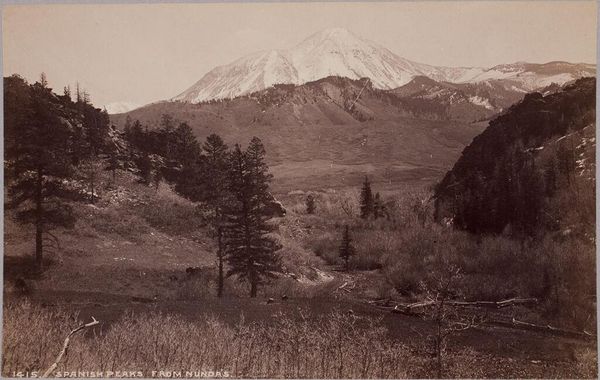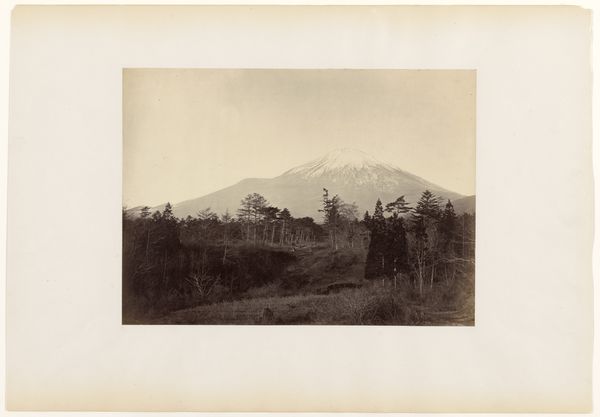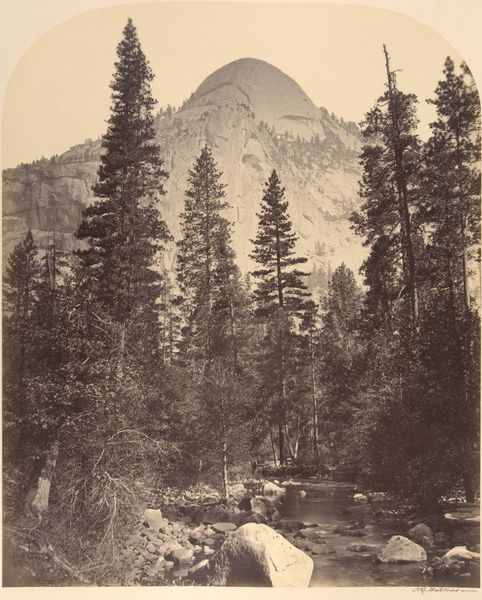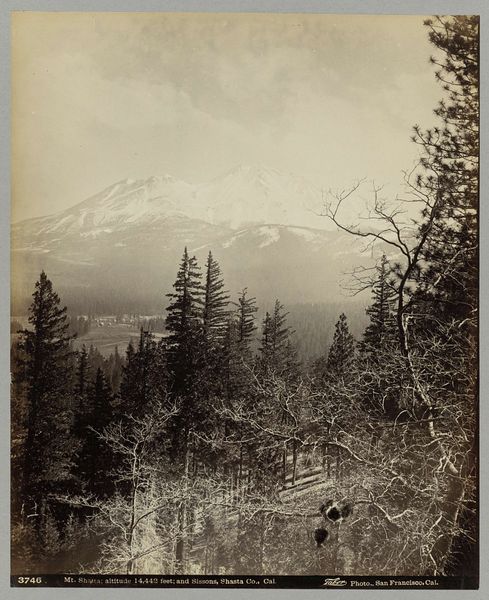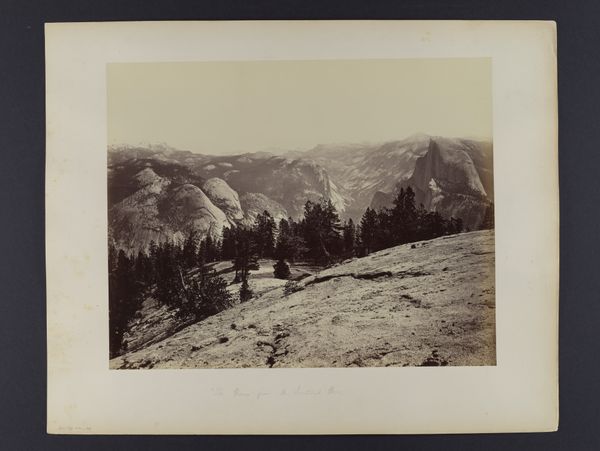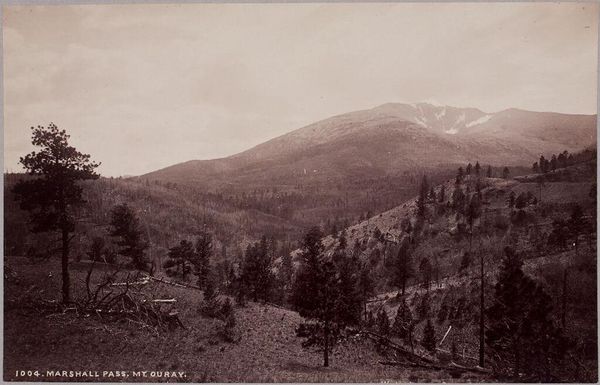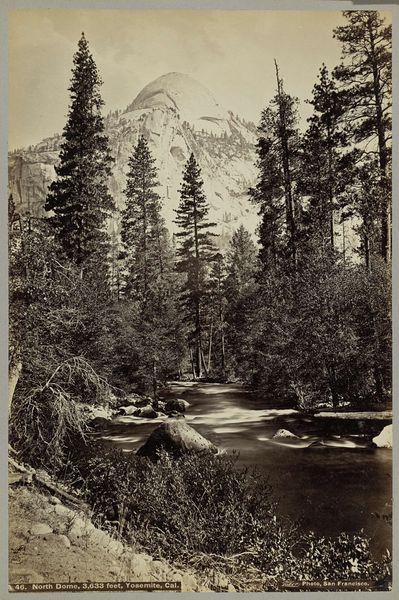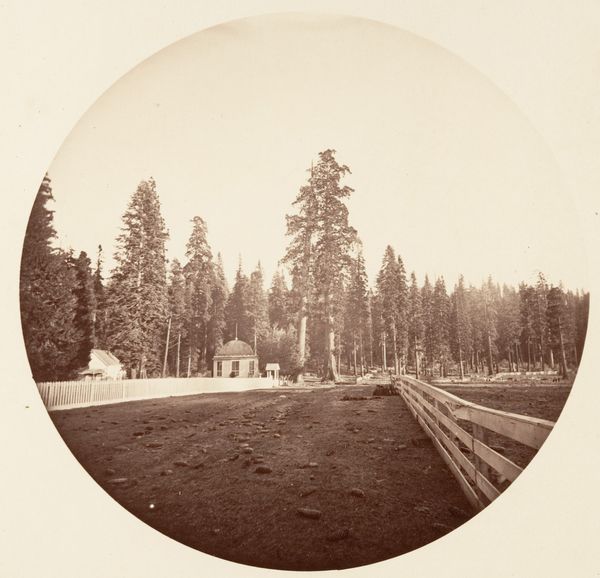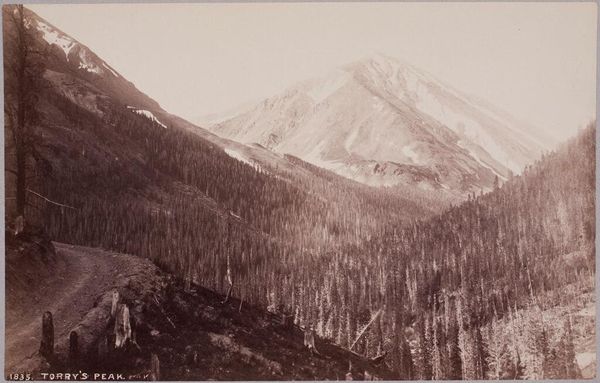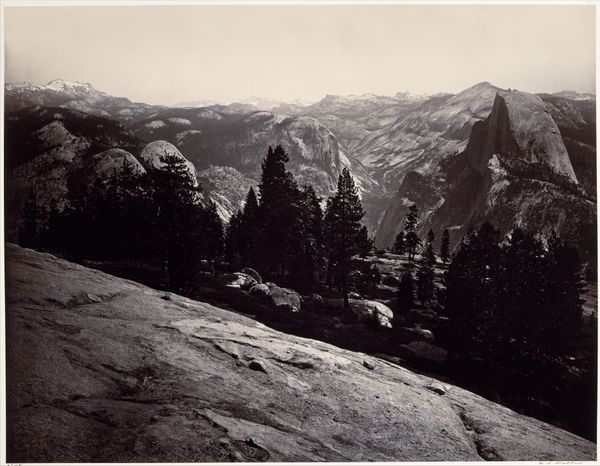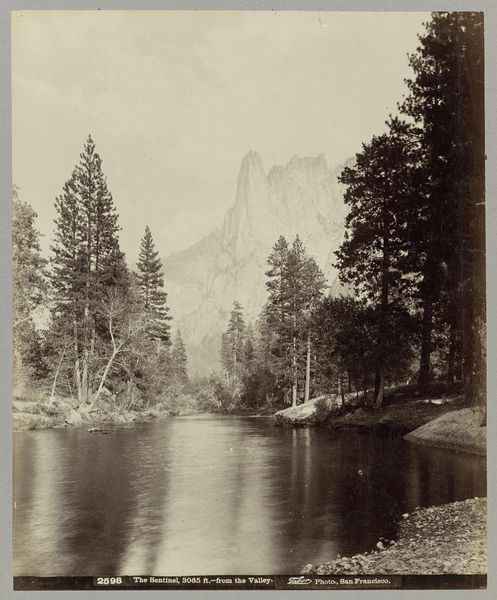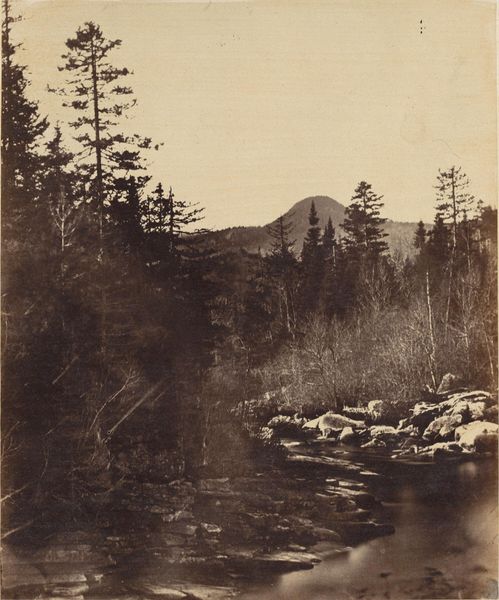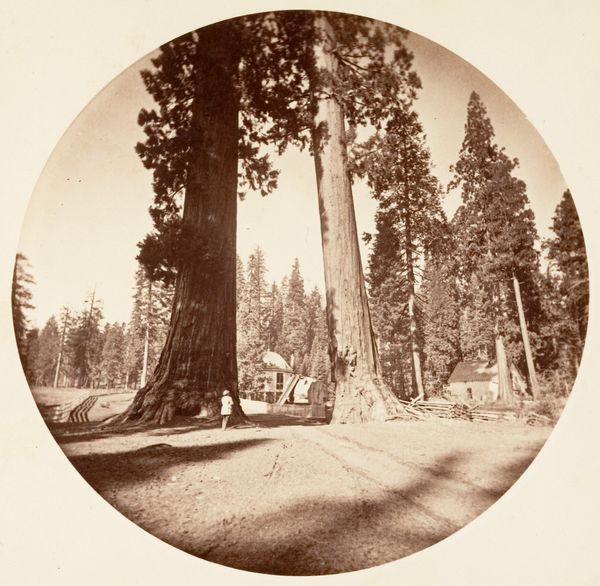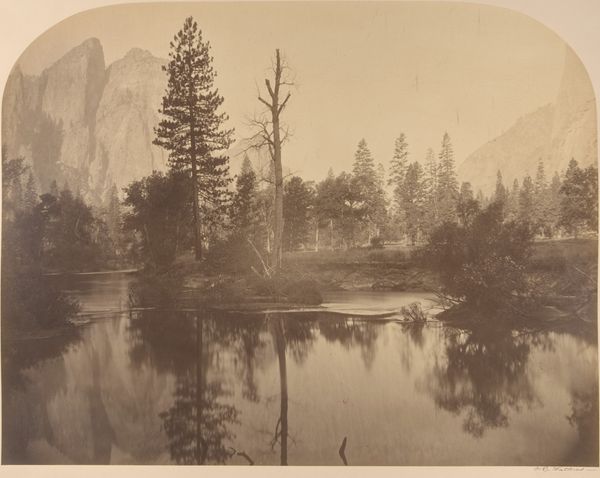
silver, plein-air, photography, gelatin-silver-print
#
silver
#
plein-air
#
landscape
#
photography
#
mountain
#
gelatin-silver-print
#
hudson-river-school
#
realism
Dimensions: Image: 40 x 52.4 cm (15 3/4 x 20 5/8 in.) Frame: 65.1 x 74 cm (25 5/8 x 29 1/8 in.)
Copyright: Public Domain
Editor: Here we have Carleton Watkins’ photograph, "Mount Shasta from the North," created around 1870. It’s a stunning gelatin-silver print, part of the Hudson River School movement. I’m immediately struck by the vastness of the landscape and the almost spiritual quality of the mountain. What do you see in this piece, especially given its historical context? Curator: What stands out to me is how Watkins’ image, seemingly a pure representation of nature, played a significant role in shaping public perception and ultimately, the fate of the American West. This image circulated widely. Editor: Shaping its fate? How so? Curator: Think about the historical moment. It was taken not long after the Civil War and amidst westward expansion. Photographs like this, widely disseminated, visually ‘conquered’ the landscape. Watkins presented an image of monumental, untamed beauty, which, paradoxically, fueled desires for settlement, resource extraction, and ultimately, control. The sublime, as depicted here, becomes a resource, both visually and economically. Does that shift how you see the work? Editor: Absolutely. It’s easy to get lost in the aesthetics and forget that even landscape photography can be deeply embedded in socio-political narratives. It was almost like propaganda to promote settling the West. Curator: Precisely. And consider the implications for indigenous populations who were already living in and stewarding that land. Watkins’ photograph, celebrated for its artistic merit, contributed to a narrative that often erased their presence and claims. Editor: That gives me a lot to think about. I appreciate you pointing out that the ‘politics of imagery’ aren’t just confined to portraits or historical paintings, but influence our understanding and use of the natural world. Curator: Indeed. Seeing art in its broader social and political context allows for a richer and more critical appreciation.
Comments
No comments
Be the first to comment and join the conversation on the ultimate creative platform.
